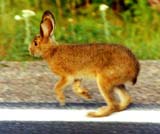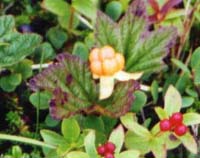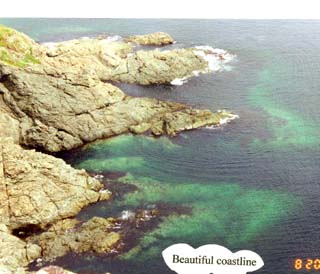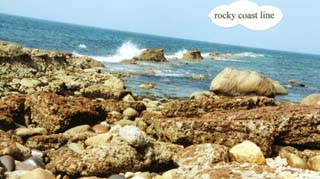Newfoundland
August 2002
We drove from the Hershey Family Reunion
in Earl Park, Indiana, to North Sydney, NS, and caught the August 11, 9:00 AM
ferry to Port aux Basques, NF, arriving about 3 PM Newfoundland time.
Newfoundland time is one-half hour ahead of Atlantic time as used in the other
Canadian Maritime Provinces.
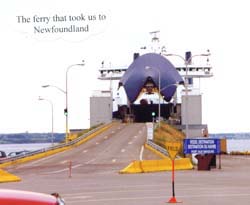
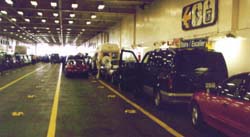
The ferry is large compared to others I have been on. Vehicles are carried on
two decks. We were on the upper deck. The lower deck was largely trucks and
busses. Entrance to the lower deck was to the right and below the ramp to the
upper deck. That is our van with the open door. There was room for more
vehicles on the upper deck, so I assume that all stand-bys got on. We had to be
in line an hour before the scheduled departure to guarantee our reservation.
This led me to think that reservations were not really needed, but when we
returned three weeks later, we had to wait a day since the early ferry on my
first choice day was full.
My plan was to drive to St. Anthony in the far Northwestern
Newfoundland first, and then sight-see on the return trip. There is only one
road for most of the way when you leave the Trans-Canada highway at Deer Lake.

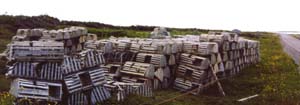
Several curious things were seen along the highway. First, there were many large
stacks of firewood just off the road. Second, there were several large stacks of
lobster traps, some alongside the firewood. Third, there were a large number of
small vegetable gardens close beside the highway. Later, we learned that
residents can, for a small fee, cut up to 8 chords of wood for personal use on
"Crown" land. They cut it in the winter, and carry it by sled to a convenient
place beside the road. After drying for a year, it is cut to length and split as
needed for size in the summer. When we were there, most was ready for transport
to their dwellings, and some was being carried by pickup and ATV. Eight chords
is a lot of wood, but that is about the amount needed to heat a small house with
the long, cold winter.
The lobster traps were there as a place of storage. There are
severe restrictions on trapping now compared to few years ago. Now, one
fisherman can use a maximum of 300 traps, compared to 1000 allowed previously.
The open season is also very short. With the rocky coasts, there is just not
enough room to store the excess traps near the boat landings.
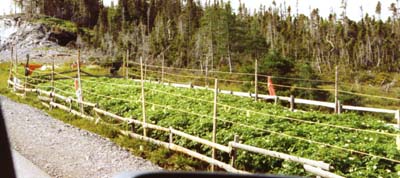
The gardens are beside the road because that is the only place where the dirt is
deep enough over the rock for a garden. Most of western Newfoundland is solid
rock, with a thin layer of dirt wherever it does not wash away. The road is
built up above the level of the land, and has deep ditches along most of its
length. The ditches fill-in with dirt, giving the needed depth for a garden.
Almost all the land outside the towns is Crown land, and no buildings are
allowed, but the gardens are allowed. The gardens, woodpiles, and lobster traps
belong to the people in the small towns, and everyone knows who owns what. There is no problem of theft or vandalism.
There is a problem that causes most gardeners to fence in their
garden. Newfoundland has lots of moose and caribou.
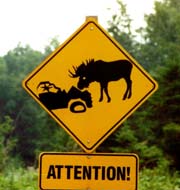
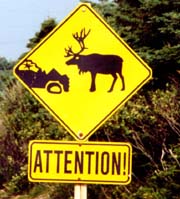
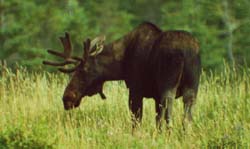
Moose are a significant problem when driving at night. During the day most avoid
the roads, but many are on the roads at night. The best dirt is beside the
roads, so that is where the best plants grow that the moose prefer to eat.








